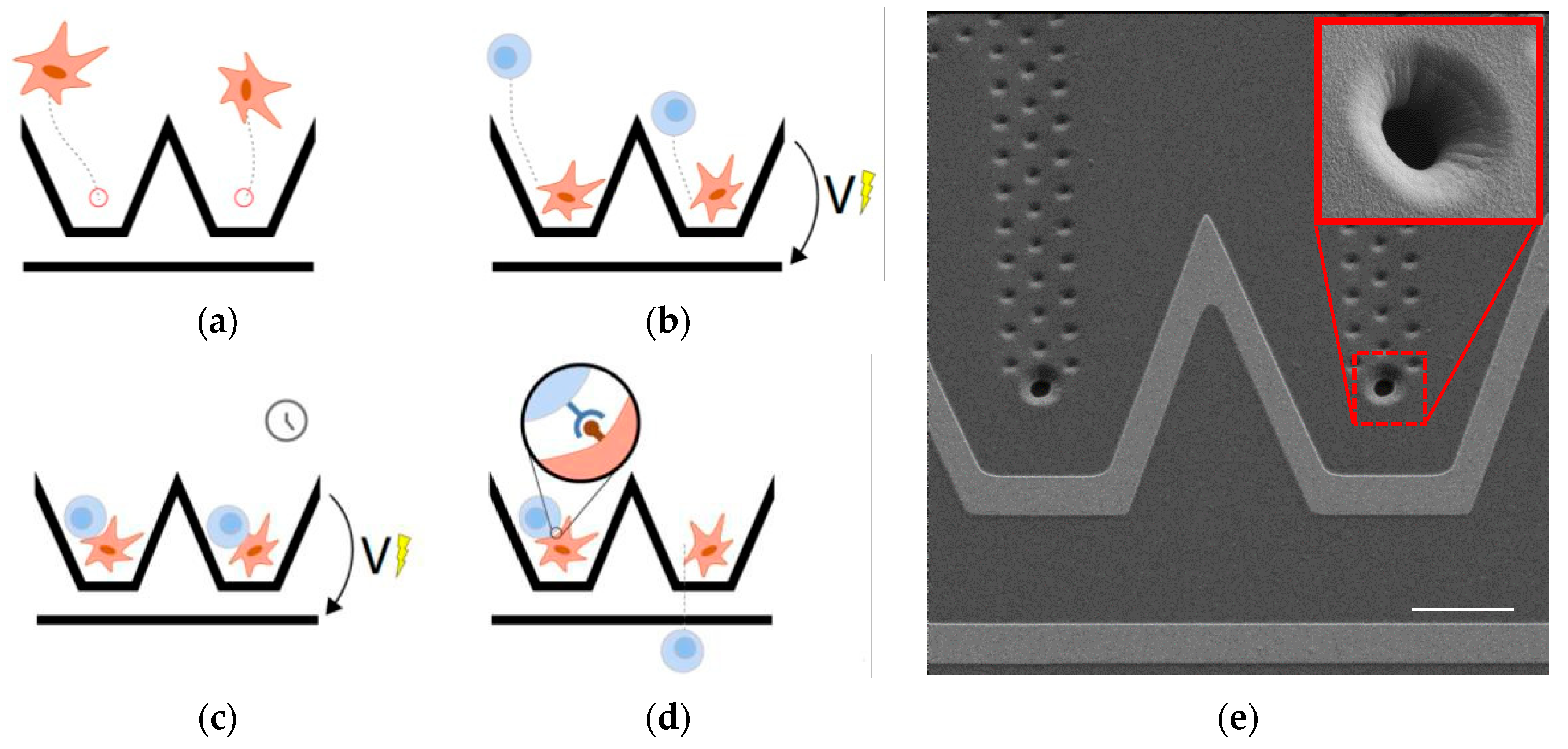Controlled Contact between Beads and Cells for the Characterization of Receptor–Ligand Bonds †
Abstract
1. Introduction
2. Discussion
Author Contributions
Funding
Institutional Review Board Statement
Informed Consent Statement
Data Availability Statement
Conflicts of Interest
References
- Liu, B.; Chen, W.; Zhu, C. Molecular force spectroscopy on cells. Annu. Rev. Phys. Chem. 2015, 66, 427–451. [Google Scholar] [CrossRef]
- Lipp, C.; Uning, K.; Cottet, J.; Migliozzi, D.; Bertsch, A.; Renaud, P. Planar hydrodynamic traps and buried channels for bead and cell trapping and releasing. Lab Chip 2021, 21, 3686–3694. [Google Scholar] [CrossRef]
- Lipp, C.; Koebel, L.; Bertsch, A.; Gauthier, M.; Bolopion, A.; Renaud, P. Dielectrophoretic Traps for Efficient Bead and Cell Trapping and Formation of Aggregates of Controlled Size and Composition. Front. Bioeng. Biotechnol. 2022, 10, 910578. [Google Scholar] [CrossRef]


Disclaimer/Publisher’s Note: The statements, opinions and data contained in all publications are solely those of the individual author(s) and contributor(s) and not of MDPI and/or the editor(s). MDPI and/or the editor(s) disclaim responsibility for any injury to people or property resulting from any ideas, methods, instructions or products referred to in the content. |
© 2024 by the authors. Licensee MDPI, Basel, Switzerland. This article is an open access article distributed under the terms and conditions of the Creative Commons Attribution (CC BY) license (https://creativecommons.org/licenses/by/4.0/).
Share and Cite
Lipp, C.; Koebel, L.; Loyon, R.; Bolopion, A.; Spehner, L.; Gauthier, M.; Borg, C.; Bertsch, A.; Renaud, P. Controlled Contact between Beads and Cells for the Characterization of Receptor–Ligand Bonds. Proceedings 2024, 97, 189. https://doi.org/10.3390/proceedings2024097189
Lipp C, Koebel L, Loyon R, Bolopion A, Spehner L, Gauthier M, Borg C, Bertsch A, Renaud P. Controlled Contact between Beads and Cells for the Characterization of Receptor–Ligand Bonds. Proceedings. 2024; 97(1):189. https://doi.org/10.3390/proceedings2024097189
Chicago/Turabian StyleLipp, Clémentine, Laure Koebel, Romain Loyon, Aude Bolopion, Laurie Spehner, Michaël Gauthier, Christophe Borg, Arnaud Bertsch, and Philippe Renaud. 2024. "Controlled Contact between Beads and Cells for the Characterization of Receptor–Ligand Bonds" Proceedings 97, no. 1: 189. https://doi.org/10.3390/proceedings2024097189
APA StyleLipp, C., Koebel, L., Loyon, R., Bolopion, A., Spehner, L., Gauthier, M., Borg, C., Bertsch, A., & Renaud, P. (2024). Controlled Contact between Beads and Cells for the Characterization of Receptor–Ligand Bonds. Proceedings, 97(1), 189. https://doi.org/10.3390/proceedings2024097189





